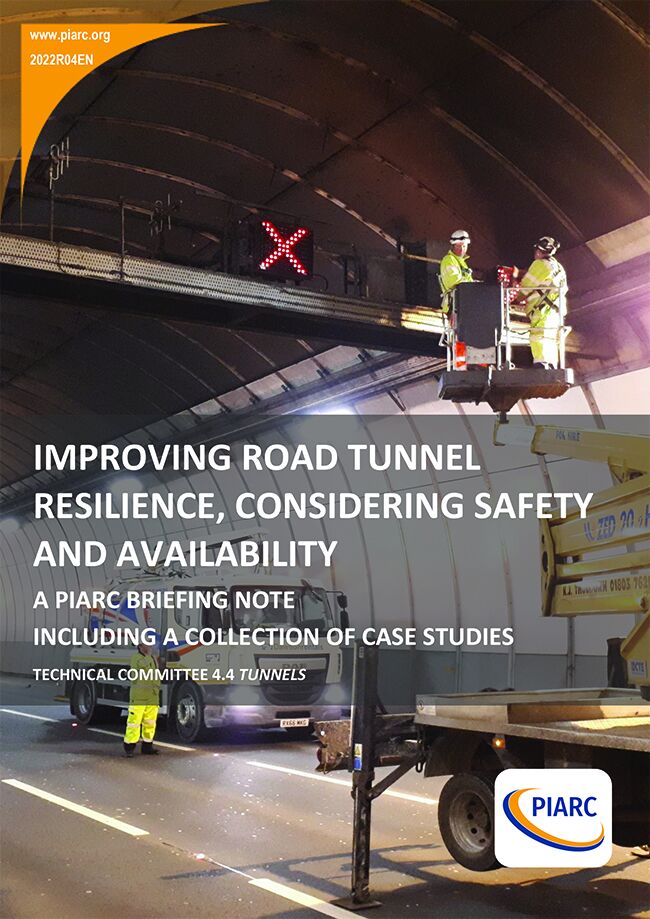Improving Road Tunnel Resilience, Considering Safety and Availability - Literature Review

This report presents a review of literature on the improvement of road tunnel resilience as well as a collection of case studies that illustrate how this topic is being dealt with in practice. The content of the report is addressed at several target groups involved in the planning, design, implementation, operation, maintenance and refurbishment of road tunnels, such as decision makers, tunnel owners and managers, tunnel operators, emergency response services, designers, tunnel safety experts, safety officers and risk analysis specialists. Much of the content of the report is relevant for both high-income as middle- and low-income countries, because resilience is a concept rather than a specified recipe; management approaches and improvement measures can (and should) be tailored to the local requirements, goals and circumstances.
Many definitions for “resilience” were found, but the Working Group decided on the following definition:
“The ability to prepare, plan for, resist, absorb, recover from, more successfully adapt to actual or potential negative effects of events or developments affecting the availability of a road tunnel in a timely and efficient way. In this context, an acceptable safety level is a mandatory constraint for the availability of the road tunnel”.
This definition is in line with the current general definition of resilience by PIARC (TC 1.4, 2021) but adapted to road tunnels and their primary function. Since resilience in the road sector is addressed by several PIARC Committees as a cross-cutting issue on which work is ongoing, the definition may need to evolve in the future.
The literature review in this briefing note focusses on the following topics:
• General concepts and approaches for resilience management and improvement;
• Legislation, standards, strategies and policies;
• Criteria and requirements for resilience, availability and safety as a mandatory constraint;
• Various events and future developments to be resilient for, like weather conditions, climate change and other natural hazards like earthquakes and flooding, traffic incidents and traffic developments, calamities like fire, physical and cyber-security incidents, failure of technical or operational safety measures, including pandemics threatening the availability of the tunnel staff, maintenance and refurbishment works and technical and social developments like SMART mobility and the growing use of new energy carriers for vehicles;
• Possible measures to improve road tunnel resilience for these events;
• Organisational and managerial aspects of resilience improvement.
The report is completed with conclusions and recommendations for the target groups (see Chapter 5), an extensive reference list, a glossary and appendices.
Information sheet
- Date: 2022
- Author(s): Comité technique / Technical Committee / Comité Técnico 2020-2023 4.4 Tunnels / Tunnels / Túneles
- Domain(s): Road Tunnel Operations
- Type: Literature Review
- PIARC Ref.: 2022R04EN
- ISBN: 978-2-84060-679-6
- Number of pages: 191